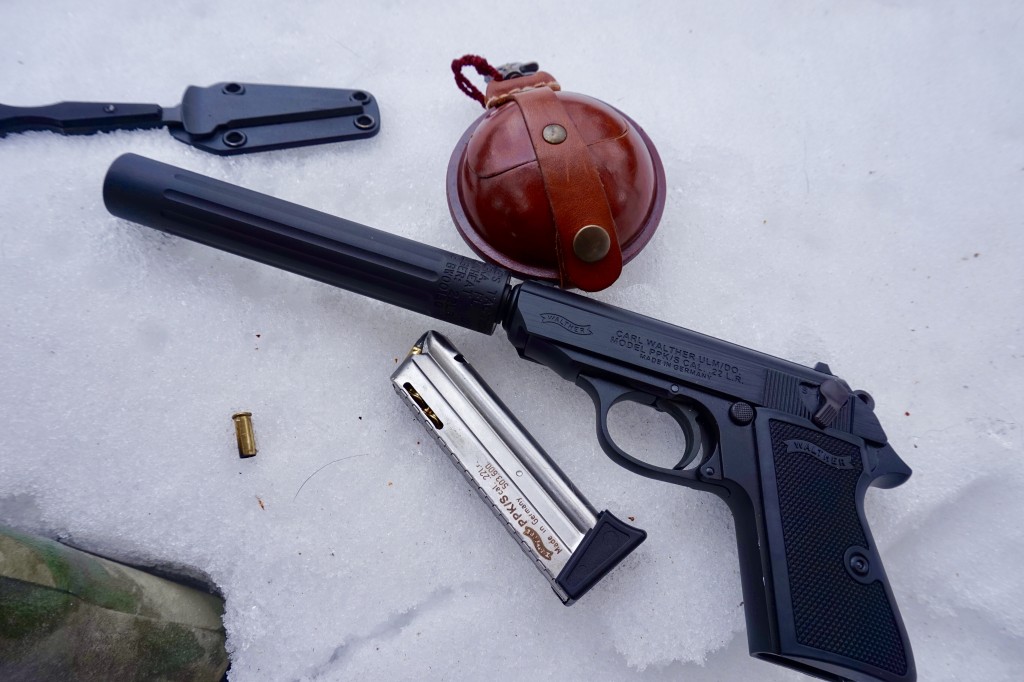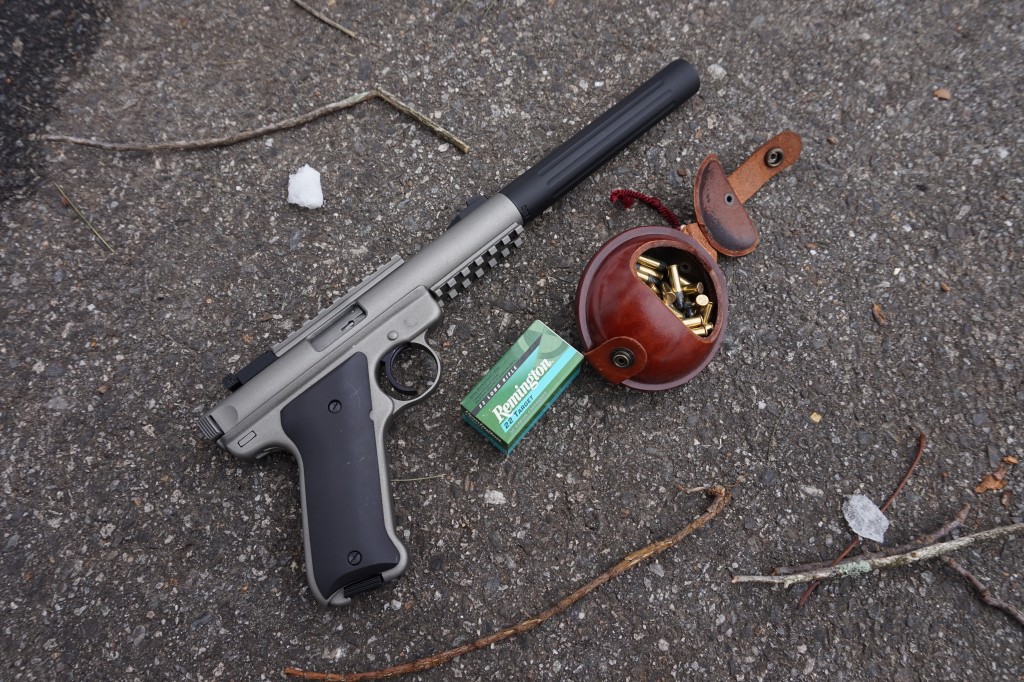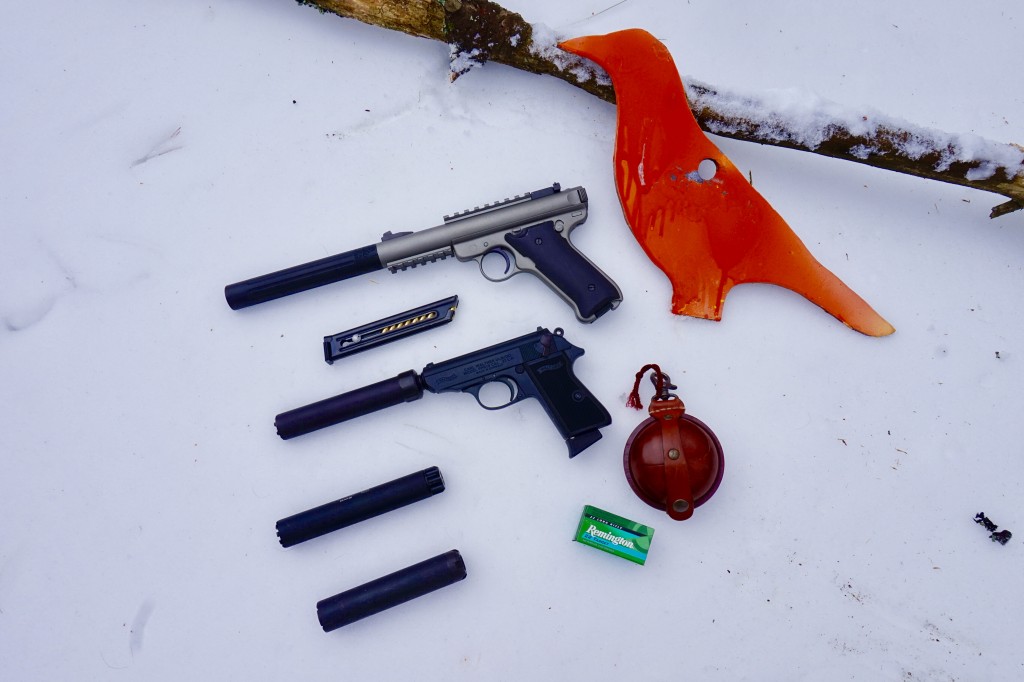Silencer Shop Authority: Spike’s Tactical Buckwheat Review
I just finished writing letters to all of the members of Congress who are supposed to represent my interests in Washington. Mind you, not in support of the Hearing Protection Act, which I have also done (you should as well), but petitioning them to enact a “Rimfire Suppression Awareness Month.” The joys of shooting silenced, subsonic .22 long rifle firearms need to be shared far and wide – and what better way than to have 30 days of quiet appreciation. Continuing on this mission, let’s take a look at the Spike’s Tactical Buckwheat, an aluminum rimfire suppressor with a robust feature set.
Here’s my standard disclaimer: I am not an expert in all things silencer. Having handled and shot a fair amount of suppressors, I believe I can reasonably articulate to you, the buyer, the important features (and the unnecessary or unwanted ones) for the cans I am fortunate enough to review, As I will do with all my write-ups, I will look at each of the suppressors from the point of view of “given a choice, would I spend my money on this company’s gear?”
Just keep in mind, I am only allowed to review each model for a short amount of time under controlled circumstances – no torture tests or decibel metering. However, you should be able to walk away after reading each review with the knowledge of where the silencer fits into your collection of hosts.
If you aren’t in the mood for the full review, I’ll skip ahead to an abbreviated conclusion: the Spike’s Tactical Buckwheat silencer is a solid shooter that performs very well on both pistol and rifle hosts with little to no first round pop. What makes it even more attractive is it’s price point; you can pick up a Buckwheat from Silencer Shop for slightly above $250, depending on your local dealer.
On with the show…
In terms of appearance, the Buckwheat is an attractive silencer with a fluted tube and a matte black finish. The required engraving is a bit too large for my taste, but that’s only a trivial concern. The length and outer diameter of this silencer is right in the meaty part of the curve when it comes to the current population of rimfire cans.
Spike’s Tactical Buckwheat Specifications
- CALIBER RATING: .22 LR
- THREAD PITCH: 1/2×28
- COLOR: Black
- LENGTH: 6″
- DIAMETER: 1.0″
- WEIGHT: 5.5 oz
- FINISH: T3 Hardcoat Anodize, Nitride
- BUILD MATERIAL: 7075 T6 Aluminum, Titanium
The Buckwheat silencer consists of a fluted, 7075 aluminum tube that encases the individual baffles. Moreover, the blast baffle is heavy-duty titanium, while the remaining baffles are made of durable aluminum (keeping the overall weight to a minimum) and are Iridite-coated for corrosion resistance. The manufacturer designed the baffles to interlock using keyed areas on each, and the ports intentionally rotate through the stack once constructed. In addition, the endcap showcases stainless steel and has an O-ring for an air-tight sealant.
Six ammunition types were used to test the Buckwheat:
- Remington Target
- American Eagle – Suppressor
- Gemtech Silencer Subsonic
- CCI Segmented Hollow Point
- RWS R50
- Federal High-Velocity Match
Four host guns were used to test the Buckwheat:
- Ruger 10/22 with a Volquartsen barrel
- Ruger MKII with a Tactical Solutions PAC-LITE barrel/upper
- Walther PPK/S
- CZ455 Bolt Action Rifle*
* Not pictured is the CZ 455 since it is currently sans-optic.
Since I believe this silencer is intended to be used on a variety of different hosts, I think it’s fair to give it a solid workout with ammo and guns that match a typical users habits. However, I did throw in two curve balls for good measure. The first is the CCI segmented hollow point. Don’t get me wrong, this is great ammo that is crazy quiet, but it will not cycle semiautomatic guns. So keep that in mind the next time you are loading mags.
The second odd ammo choice for testing the Buckwheat was the use of the Federal High Velocity Match. Again, this is some high quality ammunition that performs, however it’s no secret that when your goal is maximum suppression, keeping your rounds subsonic is key.
Speaking of which, my friend and fellow TFB teammate James R. recently produced a video testing standard and high velocity ammunition in the Walther PPK/S. And although the results aren’t terribly surprising, it does highlight that in short barrels, like the one in the PPK/S, generally suppressor-specific ammunition isn’t required.
Having said all that, my favorite rimfire ammunition at the moment is the Gemtech Silencer Subsonic. It runs clean, it’s accurate and most importantly, it’s quiet. And I was happy to find out that the Gemtech ammo sounds great in the Spike’s rimfire can, independent of what host was used.
Walther PPK/S – No matter how hard I tried, I couldn’t get a first-round pop to show up, which is impressive on its own. The Buckwheat had a pleasant, mid-range tone with most of the ammunition types. The one exception was the CCI Quiet; it was the quietest of the six types used in the Walther. Like “click, no tone, no nothing” quiet. But remember, since it doesn’t cycle the action, it effectively turns a semiauto into a manual repeater.
Ruger/PAC–LITE – Here the results were very similar to the PPK/S testing. I did have a few HV Match rounds break the sound barrier, resulting in that telltale crack we all have experienced. Also, this was the only platform that I used some ablative media (wire pulling gel) to run the Gemtech ammo through the Buckwheat while “wet”. That was a fun few magazines. Do yourself a favor and spend the $5-$10 to pickup some wire pulling gel. It’s giggle-worthy.
Let’s talk briefly about environmental variables. The velocity in which sounds travel through our surrounding atmosphere is dependent on several factors: temperature, humidity, altitude and geography. All of these factors make it difficult to gather silencer test data reliably. In a perfect world, we would have access to a climate controlled room and a proper sound meter to perform testing. But since we don’t, results of our tests will obviously be fairly subjective.
In my testing of the Buckwheat, the weather was cold, the ground was snow covered and the surrounding trees were all leafless. All of which could have made the suppressed report seem louder than if you were standing in a dry, warm desert primarily because the snow will reflect sounds better than grass, leaves and undergrowth. The colder temperatures are less of a factor.
Ruger 10/22 – Volquartsen: The Buckwheat did great on this iconic setup, both in terms of appearance and performance. The outer diameter matched almost perfectly with the target bull barrel. All of the ammunition sounded great with the same mid-level tone as found on the pistols. The same two exceptions – the CCI quiet cycling issue and the supersonic crack of the Federal HV – were found on the 10/22 as well. As expected, all of the high-velocity ammunition were supersonic out of the rifle’s 16 inch barrel.
CZ455: This setup was my favorite for the Spike’s Buckwheat – the long barrel ensured a full powder burn and the locked bolt prevented any blowback or action noise (extra sound). It’s time I invested in a dedicated optic for the CZ and make it my go-to pest control gun. The Starlings are especially out of control this year.
The baffles slid out easily with just a few taps on a block of wood. As I mentioned in my last review, I don’t clean my silencers to a pristine shine; just enough to keep them maintained and free of large deposits and fouling. While the blast baffle (first) is made from titanium for added durability, the remaining baffles are aluminum for added weight savings.
Conclusions:
The Spike’s Tactical Buckwheat is a solid choice for both pistol and rifle hosts using a variety of ammunition. It has a pleasant mid-range tone, a manageable length and weight, breaks down and cleans easily and is very affordable. If you are in the market for either your first or 10th rimfire suppressor, you will be more than happy adding it to your lineup.
We use only the highest quality American made materials, you will never find inferior imported materials in our rifles, we just won’t allow it. We are shooters, just like most of you and we won’t sell anything that we, ourselves, wouldn’t trust our lives on. Cutting corners is not allowed in our shop and attention to detail is never to be neglected. It is our rule that quality control is everyone’s responsibility, from the guy who unloads materials off the delivery truck, to the armorers who build the rifles, to the person who boxes up the product before it is sent to the customer, every member of our staff is responsible for QC and inspections are conducted at every level of production.












